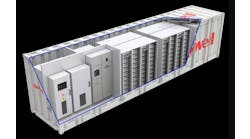In the same way that basic maintenance, efficient hardware and simpler networking contribute to sustainability, all the recent advances in the Industrial Internet of Things (IIoT), edge and cloud computing, data analytics and other types of digitalization can also make it easier for users and organizations to go green.
"There are two big factors affecting sustainability right now. First, the COVID-19 pandemic raised awareness, and reminded everyone to stay alert about this and other issues. Second, the U.N.'s Climate Change Conference 2021 in Glasgow, Scotland, presented its framework for addressing climate change, and is requiring participating nations to provide an update on their emissions progress every year, including what they expect their emissions will be and what their reduction plans are," says Dr. Paige Morse, sustainability advisor at AspenTech. "AspenTech works with process industries on how they can use digital solutions to achieve sustainability and optimization, how to reach new targets on carbon capture and hydrogen as they transition to new energy sources, and how to use supply chain tracking to reduce plastic waste and encourage recycling by reintegrating plastics back into production processes."
This article is part of a series on industrial sustainability. Read more here.
To achieve similar sustainability gains, Morse concurs that users and organizations must examine their present processes, make them as efficient as possible, gather data on their CO2 emissions and waste, and adopt an asset performance management program that includes sustainability. "Several familiar digital solutions can help sustainability immensely. For example, advanced process control (APC) can profile actual operations as they're running and indicate optimized and sustainable adjustments. Simulations and digital twins can point to further improvements, allow them to be tested, and use APC to apply them. Once products are produced more sustainably, supply chain software can show how to pick the best option for reducing the energy and emissions required to distribute them. Users can also track their CO2 emissions and waste data, and improve performance by making adjustments to production plans."
For example, Saras S.p.A. recently sought to increase uptime and decrease maintenance costs at its 300,000-bpd Sarroch oil refinery and 575-megawatt, integrated gasification combined cycle plant (IGCC) power plant in Sardinia, Italy, by implementing AspenTech's Mtell asset performance management (APM) software and agents to gather process and condition data, and identify equipment failures. Mtell was initially applied on a feed pump, wash oil pump, makeup H2 compressor and recycle compressor. It collected 52 million sensor values, including process and condition data, and allowed Saras' team to review 163 quality issues, including bad and missing values. Mtell also cross-referenced maintenance work order histories for the four devices, including 340 previous work orders. These maintenance histories spanned 17 problem classification codes.
For a reciprocating compressor, an Mtell agent reported its accuracy at 91% with a lead time of 30 days. It also found and learned a pattern for the compressor that was also able to predict a high outlet temperature failure for a valve with a lead time of 39 days, and a valve replacement required by an instrument failure with a lead time of 25 days. In general, Mtell agents at the Sarroch refinery predicted high valve temperatures with 36 days lead time, oil seal replacements with 45 days lead time, pump seal replacements with 33 days lead time, and gas seal replacements with 24 days lead time. The software agents also identified specific failure modes and did it without false positives. Saras expects that Mtell will enable it to reduce unplanned shutdowns at the Sarroch refinery by as many as 10 days, increase revenue 1-3% percent, reduce refinery maintenance costs, and decrease operating expenses by 1-5%.
“Improving reliability positively impacts a wide range of issues, including reducing current maintenance costs, planning for abnormal process conditions, avoiding emergency or unplanned shutdowns, and managing unpredictable feed and demands," says Alessandro Zucca, digital platform manager for operations and assets at Saras. "Saras expects to achieve savings from this initiative, which is part of an important digitization project.”
Because everyone's at a different point in their understanding of sustainability and digital tools, Morse adds they should consider where it makes the most sense for them and their organization. Whether that’s adopting APC for existing assets, or adding digital twins or supply chain solutions to the software infrastructure they're already running. "Some users are pretty focused on cutting emissions immediately, while others are trying to add hydrogen to their longer-term project planning. Many are doing both," says Morse. "Sustainability also follows these two main timelines: immediate actions to reduce waste, emissions and costs, and then more gradual shifts to more innovative and sustainable production assets, processes and energy sources. The good news is software and digitalization can be a big help with either or whatever combination is the most useful."







